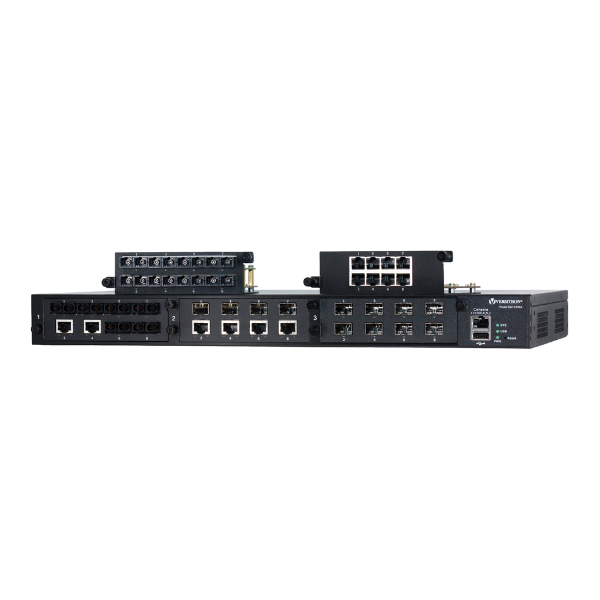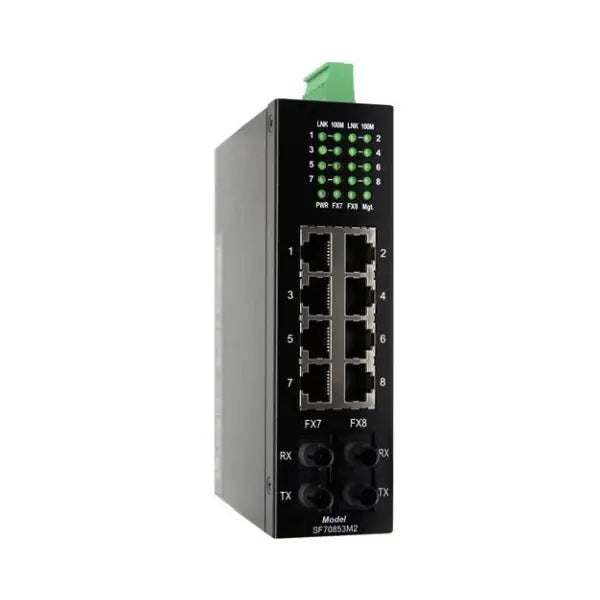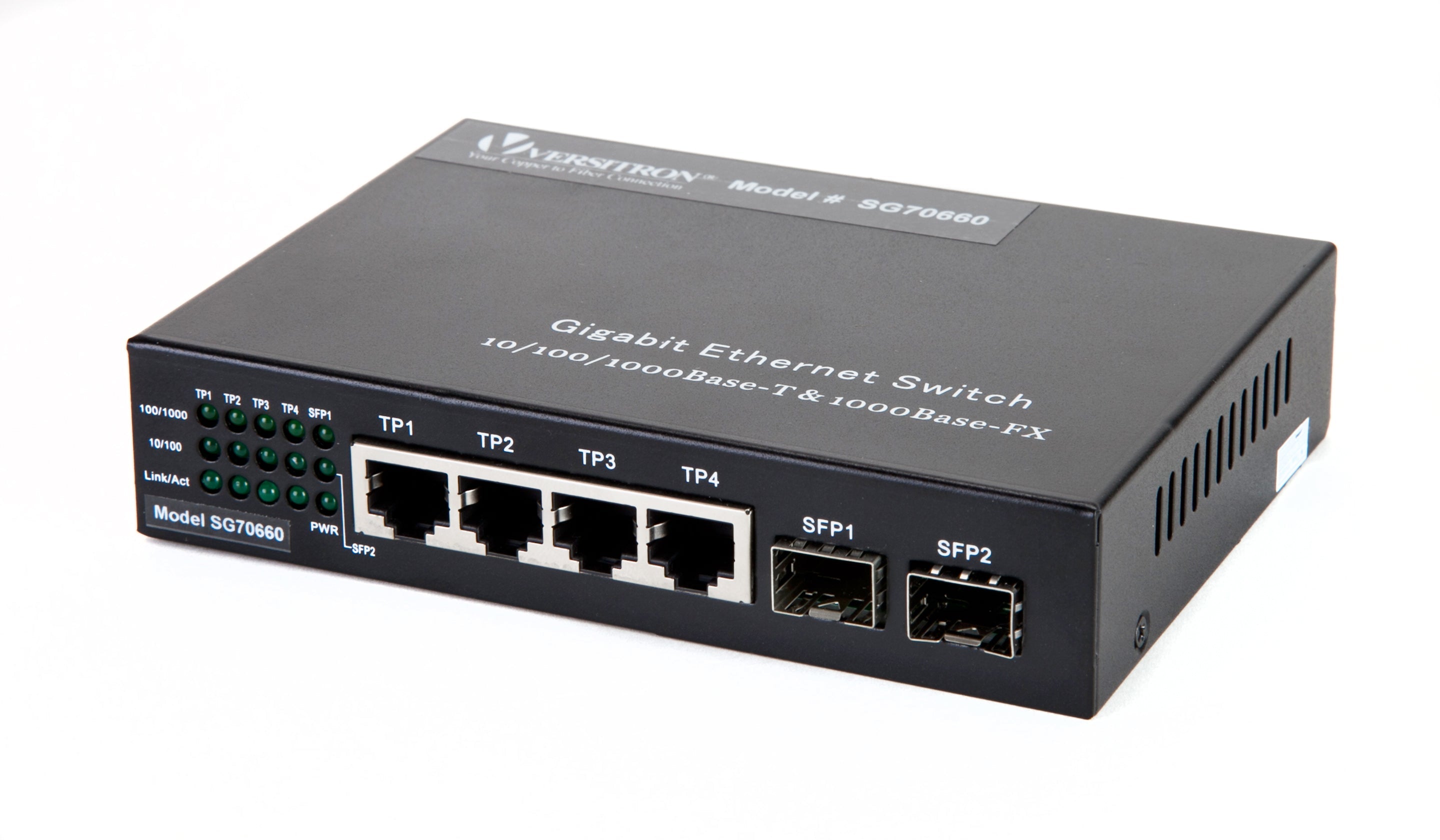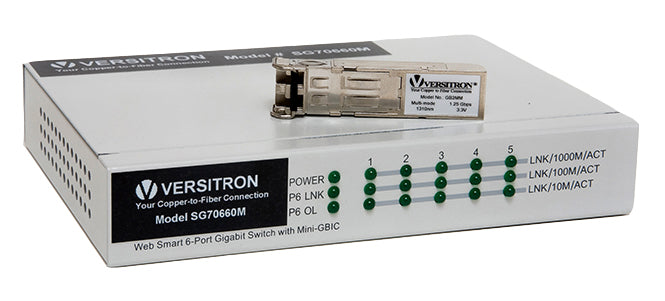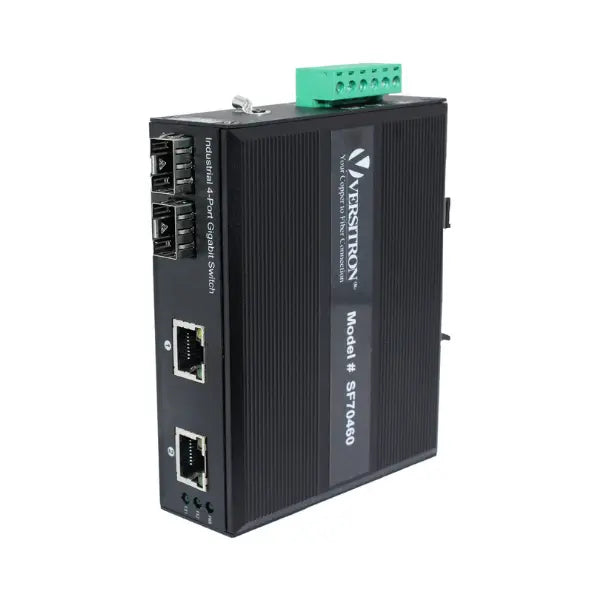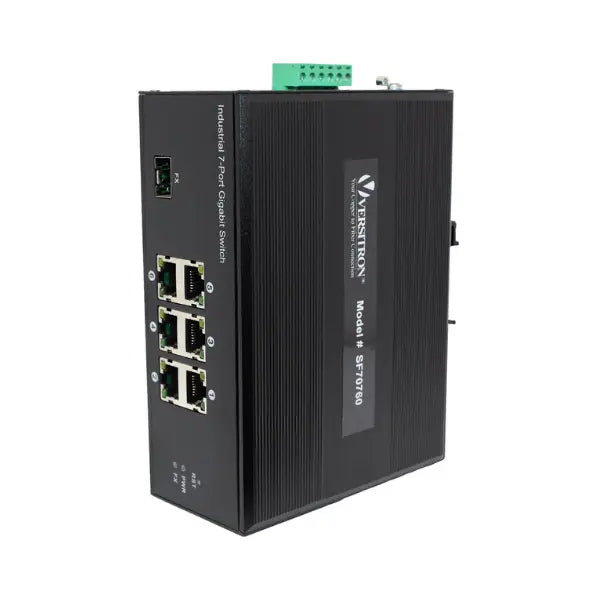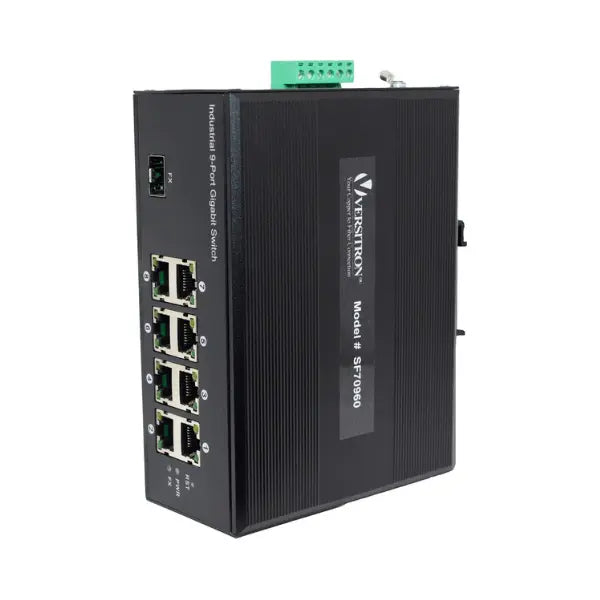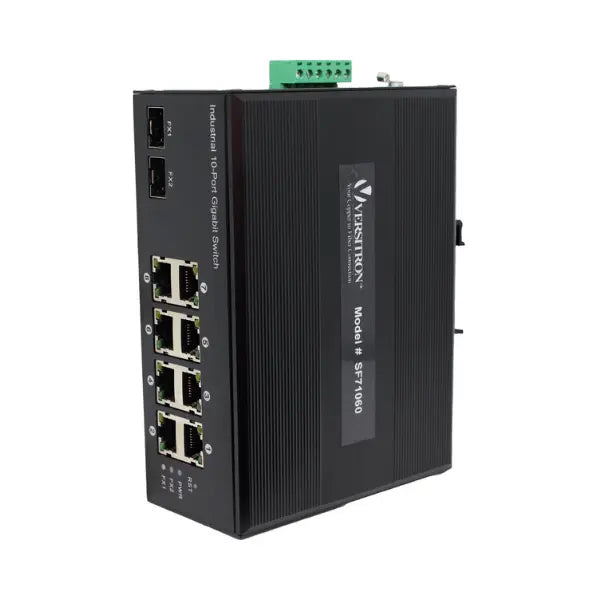
What is Network Switch Security and Why It’s Important?
- Confidentiality of Data: Network switches oversee the data flow in a network, thus, ensuring its confidentiality is important. Any unauthorized access to this data leads to information breaches, exposing it to potential hackers. However, these instances of data breach can be prevented by securing the switches
- Compliance Requirements: Many business enterprises comply with regulations that mandate specific security standards for all electronic devices, including network switches. The Health Insurance Portability and Accountability Act (HIPAA) and the Payment Card Industry Data Security Standard (PCI DSS) are two popular industry standards that govern the insurance and healthcare industry. Adhering to these standards helps organizations to avoid reputational damage and legal consequences.
- Business Continuity: Reliability and availability of network devices are essential for business continuity. Unsecured switches are vulnerable to susceptible attacks, causing downtimes. Thus, by implementing security measures on switches, organizations can improve the resilience of their networks and ensure reliable operation.
How Switches Provide Security?
- Network Segmentation: Network switches create Virtual LANs (VLANs) to facilitate network segmentation. VLANs reduce the scope of security breaches by isolating broadcast domains. This helps create an additional layer of defense and limit the impact of attacks.
- Role-based Access Control (RBAC): The switches equipped with this feature assign specific access rights and privileges to user roles to prevent their unauthorized access to critical data.
- MAC Address Filtering: The switches maintain a table of MAC addresses and filters the frame based on the same and forward them to the appropriate device. This helps ensure the data is delivered to its intended recipient and prevents unauthorized access.
- Port Security: Switches can be configured with port security features such as limiting the number of MAC addresses per port or implementing MAC address lockdown helps prevent unauthorized device connections.
- Secure Remote Access: This allows the network administrators to configure or manage devices from a remote location. This access is secured through Secure Shell (SSH), as it prevents unauthorized access by individuals. The SSH facilitates encrypted data exchange between the switch and its administrator. This helps establish data security and maintain its confidentiality.
- Secure Management Access: Advanced network switches may feature various secure management protocols, such as SNMPv3 and HTTPS that helps protect administrative access to the core switch.
Network Switch Firewall
A network switch firewall plays a role, in security as it combines firewall functions within the switch hardware. This setup boosts network security by offering traffic filtering, monitoring and access control at the switch level. Let’s delve deeper into the importance and advantages of having a network switch firewall:
Enhanced Security Through Integrated Firewalls
Network switch firewalls offer advanced security functionalities by combining traditional switching capabilities with firewall features. This integration allows for more granular control over network traffic, ensuring that only authorized data packets are allowed through.
Traffic Filtering and Monitoring
With a network switch firewall, administrators can set up rules to filter traffic based on various parameters such as IP addresses, ports, and protocols. This ensures that malicious traffic is identified and blocked at the switch level, preventing potential threats from propagating through the network. Additionally, continuous monitoring of traffic helps in early detection of unusual activities, enabling proactive security measures.
Segmentation and Isolation
Network switch firewalls support VLANs, providing an added layer of security through network segmentation. By isolating different segments of the network, the switch firewall ensures that a breach in one segment does not affect others. This segmentation is crucial for containing potential attacks and limiting their impact.
Access Control and Authentication
Switch firewalls enforce strict access control policies by integrating with authentication mechanisms such as 802.1X. This ensures that only authenticated and authorized devices can connect to the network. Role-based access control (RBAC) further refines this by granting specific permissions based on user roles, thereby minimizing the risk of unauthorized access.
Advanced Threat Protection
Modern network switch firewalls are equipped with advanced threat protection features, including intrusion detection and prevention systems (IDS/IPS). These systems analyze network traffic in real-time, identifying and mitigating threats such as malware, phishing attempts, and other cyberattacks. This proactive defense mechanism is vital for maintaining network security and integrity.
Secure Management and Updates
Network switch firewalls support secure management protocols like HTTPS and SSH, ensuring that administrative access to the switch is encrypted and secure. Regular firmware updates and patches are also crucial, as they address newly discovered vulnerabilities and enhance the security features of the switch firewall.
Switch Security Concerns in LANs
- MAC Address Spoofing: Attackers spoof MAC addresses, pretending to be legitimate devices, and this is one of the most common concerns among switch users. This spoofing can be easily avoided by restricting the MAC addresses allowed on a port or the number of users to the switch.
- Switch Spoofing: Attackers negotiate the creation of a trunk between their device and the switch, giving them access to all VLAN traffic. Generally, attackers manipulate the Spanning Tree Protocol in various ways to gain access to the network. This switch spoofing can be avoided by disabling unused protocols and services.
- VLAN Hopping: This happens when an attacker gains unauthorized access on different VLANs and starts manipulating their traffic. VLAN hopping can be easily prevented by securing unused ports and proper VLAN configuration on ports.
- Denial of Service (DoS) Attacks: This has emerged as one of the most common types of attacks in recent times, especially during the Russia-Ukraine war, where the hackers used this technique to cause service disruptions in many war-torn areas. In this technique, the switches are susceptible to DoS attacks when an attacker causes service disruption by flooding the network traffic. The DoS attacks can be avoided up to some extent by implementing rate limiting and traffic filtering on the switch.
- DHCP Spoofing: This attack occurs when an attacker pretends to be an authorized DHCP server and starts distributing malicious IP configurations to the device. Generally, the users on the network experience disruptions when this occurs. The instances of DHCP spoofing can be avoided by validating DHCP server legitimacy.
- Unsecured Management Interfaces: If not protected adequately, the management interfaces of switches are vulnerable to attacks. These instances of attacks can be easily avoided by securing them with strong authentication mechanisms, such as encryption for remote management access.
What are Network Switch Security Best Practices?
- Invest in a dedicated managed network: As the name suggests, this network is solely used for managing devices and it helps business owners in two ways – inhibiting unauthorized access to the network and reducing the chances of malicious changes to the network configuration.
- Enable Port Security: A network administrator can assign specific MAC addresses to each port in the switch. This helps avoid unauthorized access to the switch. The switch can also be configured to decide the actions to take if the MAC address limit on it exceeds. The switch ports can also be configured to block traffic from certain MAC addresses. This is extremely useful if you know that a particular device is infected by malware.
- Disable Unused Services and Ports: Unused ports and services offer many potential opportunities for attackers to exploit vulnerabilities. Hence, it is always recommended to disable the services and ports that are not used and only keep the important ones active. This can be easily implemented through the management interface of the switch.
- Segment Traffic by Setting up VLAN: This dissuades the attackers from accessing all the traffic in your network. If this segmentation is not done then an attacker can easily gain access to all the traffic in the network; however, setting up different VLANs would mean that they have only access to the traffic of the switch they are on.
- Configure the Network Switch as a DHCP Server: This assures multilayered security to your network. How? Firstly, it will assign the IP addresses to the devices that connect with it. This helps ensure that each device in the network is identified by a unique IP address and avoid conflicts that may arise when two devices share the same IP address. Configuring the switch as DHCP server also enables you manage the network traffic easily.
- Use HTTPS or SSH for Remote Access: Using SSH or HTTPs enable data encryption. It means the data transmitted between the remote device and the network switch will be encrypted, which means anyone trying to intercept the data won’t be able to read it. The device with a correct HTTPS certificate and SSH key can connect to the network switch.
- Use Network Access Control (NAC) to monitor the network: The Network Access Control helps you identify the devices that do not have proper security configuration, still, trying to connect to your network. These instances of slipped security configurations may be due to factors like outdated antivirus, missing security patches, etc. in a way, the NAC helps business owners to comply with industry regulations such as PCI DSS and HIPAA.
In conclusion, securing your network switch begins with understanding and implementing various security mechanisms. For this implementation, you need to understand the specific security concerns that your network may encounter such as VLAN hopping, MAC address spoofing, and potential DoS attacks, etc. A multi-layered approach is helpful in this context. Remember, network security is not a one process, rather you need to stay vigilant and proactive to maintain a secure infrastructure. Above all, you must invest in the quality switches that support your multilayered security approach. VERSITRON offers one of the comprehensive selections of network switches, such as managed commercial grade and industrial grade switches, PoE switches, PoE+ switches, All Fiber SFP switches, pick-a-port modular switch, and so on. You can contact the experts at the company to figure out the right type of switch for your application.
Frequently Asked Questions
Network switches can face security threats from vulnerabilities, in their firmware. Attackers could take advantage of these weaknesses to enter without permission run code or interfere with network functions. These vulnerabilities often come from mistakes in coding, design problems or using firmware versions. It's important for companies to keep their switch firmware up, to date to fix known vulnerabilities and improve their security defenses.
Anomaly detection plays a crucial role in network switch security by identifying abnormal patterns or behaviors that deviate from established norms. By analyzing network traffic, anomaly detection systems can detect suspicious activities such as unusual traffic spikes, unauthorized access attempts, or anomalous device behavior. This proactive approach enables organizations to quickly detect and respond to potential security threats, enhancing overall network security posture.
Network switch hardening involves implementing security measures to strengthen the resilience of switch devices against cyber threats. This may include disabling unnecessary services, closing unused ports, enabling encryption protocols, and applying access control policies. By hardening network switches, organizations can reduce the attack surface, mitigate potential vulnerabilities, and enhance overall network security posture.
Remote management access to network switches introduces security risks such as unauthorized access, interception of sensitive data, and exploitation of vulnerabilities in remote management protocols. To mitigate these risks, organizations should implement robust authentication mechanisms, utilize encrypted communication channels (such as SSH or VPNs), and restrict remote access to authorized administrators only. Regular monitoring and auditing of remote management activities can also help detect and respond to potential security incidents.


